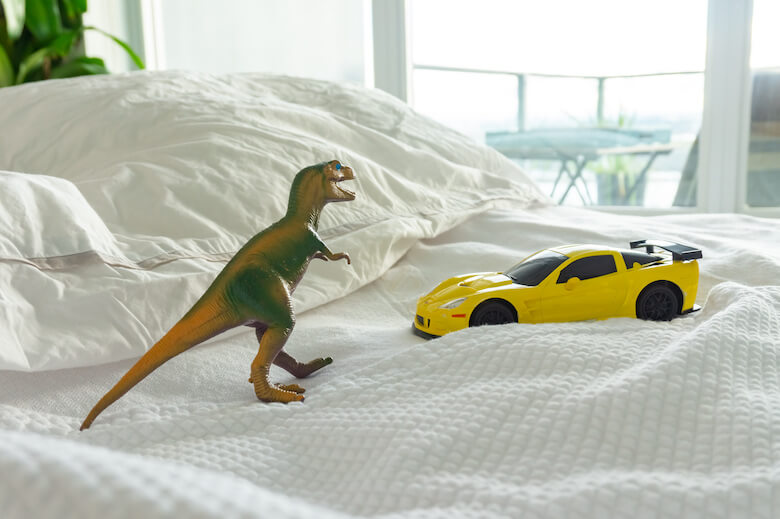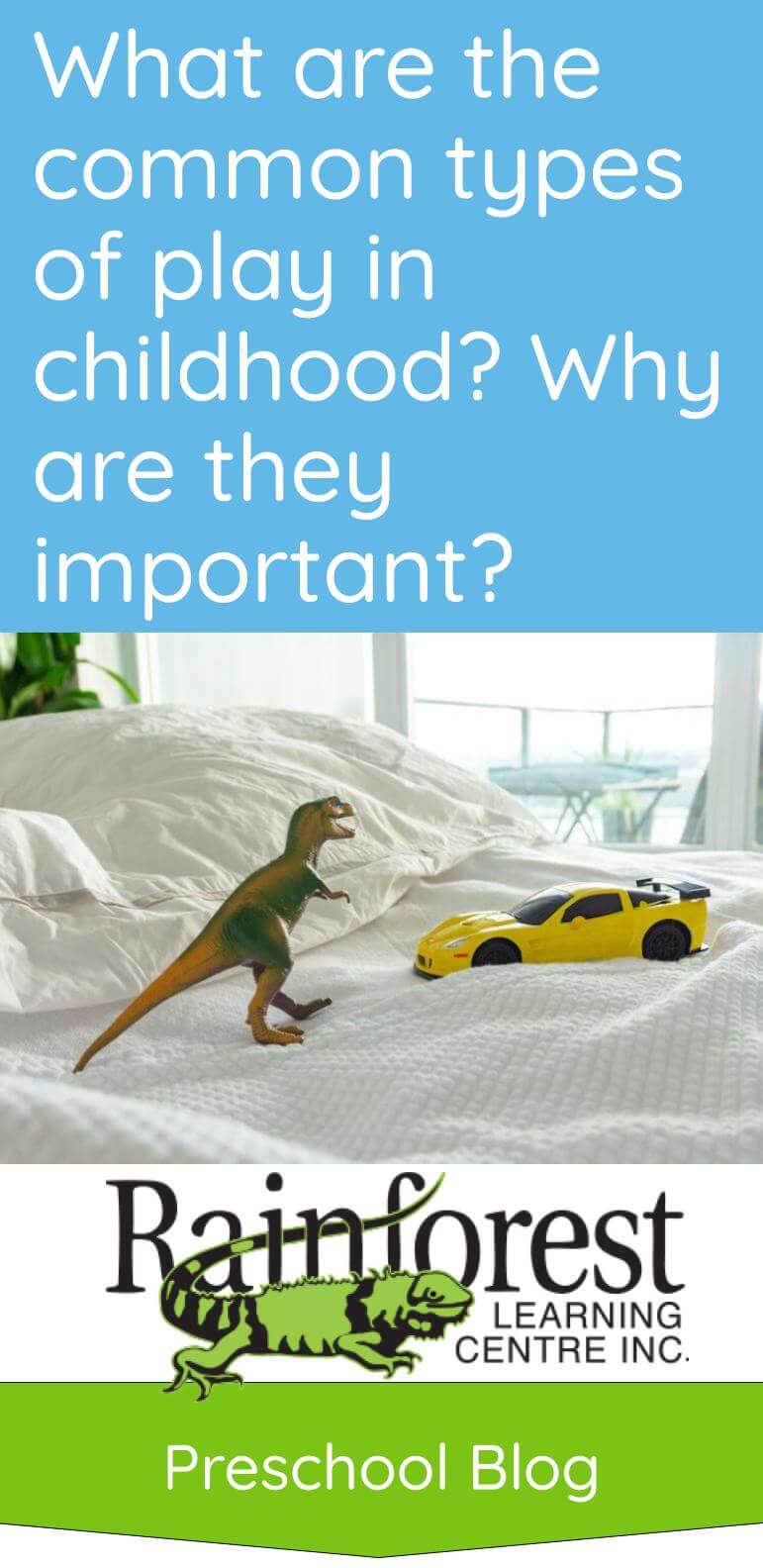
When children play, it can seem random. But research has shown that it’s not. It can be indicative of where your child is at, in terms of growth and development. It can also signal the need to introduce more types of play into your child’s routine, for better learning acquisition.
But what are these types of play? And, why are they important for caregivers to know about?
On the web, you can read the definitions of many types of play in childhood, especially in the baby, toddler and preschool years. You’ll notice there is a lot of overlap between them too. However, they mostly originated from a paper by a sociologist named Mildred Parten Newhall, who wrote about them as the “stages” of play.
Other categorizations of play can be used to explain how children spend their ‘non productive’ time (even though play is actually an important part of learning). They can be based on the types of activities performed, for example.
We’ll aim to explain the main ones in this article. Though remember, the types of play are meant to be theoretical, not ‘cut and dry,’ nor ‘scientific proof.’ They are classified to help us understand human behaviour and growth maturity in early childhood. This helps us measure the progress of a child.
Parten’s observation of the 6 stages of play as the main types of play in early childhood development
Parten’s 6 stages of play are the following:
- Unoccupied play – this is a ‘free’ form of play, when it looks like nothing is happening. It’s when a baby or toddler is simply exploring movements, sounds and touch, for the sake of knowing what they’re like. They are feeling textures on toys, they are banging objects to hear something, they are using their vocal chords, twisting their bodies, kicking, roaming and so on. There is no other objective except to experience the world around them.
- Solitary, independent play – this is a more focused type of play, where there is an activity that a child is ‘doing.’ Around two or three years of age, a child can start playing a little game with themselves, by say, rolling toy cars around the living room, or crawling in and out of a laundry basket because it’s ‘funny.’ They may be fascinated by the kitchen pots they’ve discovered in your cupboards. But generally, they are doing this type of play by themselves.
- Onlooker play – this is when a child is in a social situation with other kids, but doesn’t participate in the playtime activity. They are just observing, watching, and taking it all in. They might even be smiling, or laughing at what others are doing, without joining in. They might converse about it, but still not join in it. They are just onlookers in this stage. If your kid does this, and if it concerns you, you can relax knowing it’s a recognized form of play!
- Parallel play – you know when you schedule a playdate with another parent and child, only to find that the kiddos won’t play together, but will play independently with their own toys, next to each other? That’s parallel play. The young ones may be interested in what their counterparts are doing, and want to play with the same toys, but just not together. For example, one starts building a tower with legos, and the other one will start building their own tower with legos (there might be conflict over possession of toys too!). So they are drawn to each other’s actions, sitting near each other, but just not engaging with each other in the way we’d expect of a more socially mature child.
- Associative play – at this point, you’ve got children talking and wanting to play together, but they don’t quite know how to play in a coordinated way. There are no ‘rules,’ so to speak. The activity may be running in circles or running out to a field because it’s just fun. Or, they are ‘chasing’ each other but with nowhere to go. They might each be throwing a ball at the same time, on purpose, but not to play catch (which requires coordinated rules). That all said, however aimless this type of play seems, they love it. They’re learning to interact with others socially, and that’s a great feeling. They’ve got friends they can relate to!
- Cooperative play – this is probably the most mature type of play (for a preschooler, that is). This is when coordination and game ‘rules’ enter the scene. For example, playing ‘miniature’ versions of organized sports, or playing ‘house’ where one person is the ‘dad’ and the other is the ‘baby,’ and so on. The children start to identify as being part of a group, and want to ‘fit in.’ They also want to achieve a purpose to the game they are playing, even if ‘winning’ is not involved.
Types of play based on activities and tools
Apart from the ‘core’ 6 types of play that are common in early childhood, children also progress to other forms of play. These can be based on the tools they use, or the type of activity they engage in. Some classifications of play include:
Dramatic, symbolic, creative, imaginative, fantasy and role play
The above words can be used to describe a type of play that we can ‘group’ together (though some would differentiate them more distinctly).
Essentially, this is when kids can enter a world ‘unknown,’ like in the Rugrats TV show. They’re in the living room, but in their minds, the living room is now a jungle! Or, the couch is a tower from which they must jump and fly to save the world as a superhero. At a restaurant, they may hide under the table and say, “this is my house!” At the playground, they are ‘lost orphans’ fending for themselves. Their favourite cartoon character might show up to play. They can re-enact book and TV show stories, or make up their own.
‘Real life’ doesn’t have to apply in this type of play. Children can imagine they are a flying unicorn, or that they can build a house in a matter of seconds. It’s ok; imagination is important to developing creativity.
Costumes and play tents help a lot in this type of play! They can be store-bought or homemade. A paper towel cardboard tube can make a great telescope for a pirate, for example.
See related on our blog:
- 5 Imagination games to play with toddlers and young kids
- 4 Benefits of kids telling their own stories
- 8 Educational DIY toys you can make from home materials
- 12 Space-themed crafts & activities for preschool or daycare classrooms
Physical motor skills play
This play that involves a lot of movement, without necessarily involving the imagination, like in dramatic play. It also may not involve ‘rules’ such as in cooperative play. So apart from organized sports, this would include games like hide and seek, tag, racing, using the monkey bars, swimming, dancing, riding bikes and scooters, kicking balls, building a snowman, and plenty of loud, outdoor activity.
See related on our blog:
- 4 Top benefits of outdoor education in early childhood
- What is normal gross motor development in early childhood, and why is it important?
- 5 Preschool guest instructors to invite to your early childhood classroom
Risky and rough play
Roughhousing, play fighting – we’ve all seen it, and many have experienced it too. It’s really common among boys, and that’s ok. In fact, some research says it’s a good thing, because it teaches kids about social boundaries, and where their limits lie. It can be part of socio-dramatic play, too.
Often, this is not about actual aggression as it is about showing strength, and testing oneself.
With risk, it can be jumping from high points, climbing trees, lifting heavy things, or even approaching ‘scary’ things, like bugs. Kids might ‘dare’ each other to go into a dark closet for a while, for instance. They’ll love the thrill of it. Facing irrational fears is also not a bad thing (but bullying is – so be mindful that!).
With this type of play, supervision may be needed to a certain degree. And, if you have boys (or girls) who just need to ‘get it out,’ you may find yourself a participant in a nerf-gun or water gun war, a ‘princely sword fight’ or ‘wrestle match.’
The other end of this is when it goes too far. Jumping from the balcony is not ok. Starting fires and putting them out is not ok. Fighting ‘for real’ (especially with tools), is also going a bit too far. Throwing objects that can really hurt needs to stop. Be sure an adult is around for this sort of thing, more-so when the kids get older, and can do more serious harm.
Knocking on neighbours doors and running away can be part of risky play… but there is an easy way to put an end to that really quick: drag your kids back to apologize!
See related on our blog:
- What are age-appropriate manners for preschoolers in early childhood?
- 3 key strategies to teach manners to toddlers and preschool-aged children
- 3 ways early childhood educators can help kids get along and feel included
Constructive, manipulative, expressive, mastery and object play
This is the type of play that can involve fine motor skills, but is mainly about using objects to build or construct something. For example, playing with blocks, train sets, or putting a puzzle together.
This type of play can, of course, be considered creative play. It can be baking and decorating cookies, or making art with paint, clay or craft supplies. Throwing pebbles in a lake, drawing in the sand with a stick, or building a sand castle could count here, too.
Sometimes, feelings and thoughts can be expressed during this type of play, which we often see in art forms.
See related on our blog:
- What are normal fine motor skills to have in the early childhood years, and why are they important?
- So many easy preschool winter craft ideas to try at daycare or at home
- Why sensory development skills are important at daycare
Communication and social play
When kids play games like ‘Simon Says,’ or sing ‘action songs’ together, that can be communication play. ‘I spy my little eye’ or word games can be communicative, too. Playing board games or card games could count, too.
See related on our blog:
There are many types of play, and play is important in childhood
We’ve listed the common types of play found in childhood. But this list is certainly not exhaustive.
Playing is essentially anything we do that is not for our survival. Though, if you think about it, where would we be, as humans, if we did not play? It is more than just ‘relaxing’ – it is a form of exploration, too. It helps us be happy, and gives us an outlet for our emotions. Not to mention, when we play together, we build relationships.
So, knowing the different types of play in early childhood is important for raising well-rounded kids. Exposing young ones to games, art forms, sports, and social circles can all be helpful to their development. If you feel your child isn’t getting enough of a certain type of play, we hope this list will bring about an awareness of that lack, so it can be filled!
See related on our blog:
